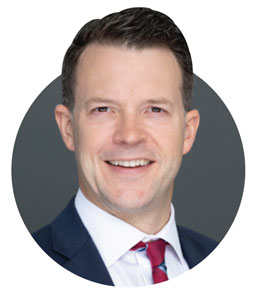Glaucoma
June 2022
by Nathan Radcliffe, MD
Glaucoma Editor

This year ahead of the ASCRS Annual Meeting, I was pleased to witness and participate in the Eyecelerator meeting. One particular session really got me thinking. It was called “Antifragility: Create Exceptional Business Opportunities Through Extraordinary Challenges.” The session was moderated by Eric Donnenfeld, MD, the chief medical editor of EyeWorld for 7 years. The session was inspired by the book Antifragile: Things That Gain from Disorder by Nassim Nicholas Taleb.
The thesis of the book is that we may think of something termed antifragile as being strong, but strong things simply remain unchanged after challenge, whereas antifragile things gain from volatility and change. Being a glaucoma doctor, the concept of antifragility got me thinking about how we can help glaucoma patients.
We listen to the patient tell us about a problem that threatens glaucoma care and use this information as a pivot point toward a therapy that protects against chaos.
In my mind, glaucoma management is frequently thwarted by black swan events. Black swan events, also described by Nassim Nicholas Taleb, are the events that are unimaginably rare but highly impactful. September 11, 2001, and COVID-19 are two examples in modern life. I can’t tell you how many patients I have seen go blind from glaucoma after years of stability because a loved one got sick, and the patient stopped taking their drops in the chaos of helping a first-degree relative through a healthcare crisis. I am still watching patients return to the clinic after COVID-19 changed their life, somehow preventing them from getting eyecare. The more I think of this, the more I see stable treatment in the glaucoma patient as critical to success, and anything that thwarts that stability threatens vision.
In any case, the recognition of how many glaucoma patients are thwarted by the chaotic events occurring in life got me to think of how I can help my glaucoma patients become antifragile. But how can patients with glaucoma, a disease that only gets worse, grow from unpredictability and chaos?
Given that we can never eliminate chaos from life, the best we can do is to recognize its potential and be prepared. Recently, when my patients report problems with traditional therapies (compliance, tolerability), I take those complaints very seriously. I recommend a number of sustained therapies. Laser, often SLT, sustained pharmacotherapy, such as intracameral bimatoprost, and standalone MIGS are a few examples. We listen to the patient tell us about a problem that threatens glaucoma care and use this information as a pivot point toward a therapy that protects against chaos.
One of the things EyeWorld is trying to do is to help doctors find the tools to protect patients from life’s chaos. In glaucoma, we have so many amazing new therapies that can bolster our patients and change their trajectory in the face of adversity.



